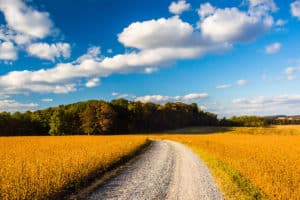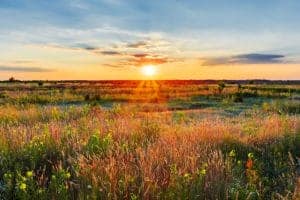Over the years, I’ve become less enthusiastic about conservation easements as they apply to timberland.
Among the mixed bag of reasons for my unease are:
1. Deliberate inflation of timber value to inflate the size of the easement value to inflate the size of the tax benefits available to the landowner;
2. Questionable assignments of environmental value to certain timberland tracts, which is the first hurdle in qualifying land for conservation-easement status;
3. Overly strict restrictions on cutting timber that have little, if anything, to do with protecting the environmental values of the tract;
4. A bias toward applying wilderness (“forever wild”; no-use) standards to non-wilderness lands in a way that doesn’t benefit the environmental values that should be protected;
5. Easement donors who don’t fully understand the long-term financial implications for spouses and heirs of severing a valuable, appreciating right in a property, particularly when it’s one of their principal financial assets;
6. Revenue loss for local governments that reduce assessed property value to reflect the donation of the easement; and
7. Long-term reduction in the amount of land capable of producing wood products, broadly defined, which may or may not affect timber supply and prices in the future.
Still, I endorse the use of conservation easements for certain types of timberland and other lands. I work with clients who use them as part of their acquisition strategies. I’m not opposed to leaving private lands completely free of human intervention, though I think that usually carries the notion of protection too far and winds up putting important environmental values at risk.
While it doesn’t address some of the issues I’ve listed above, a Working Forest Conservation Easement (WFCE) does address several important ones. A WFCE envisions timberland to be managed for timber production over a long period. This can involve annual timber-sale income in the case of a very large tract or income spaced, say, every 15 or 25 years, for smaller tracts of mixed-age, mixed-species woods. The emphasis is on long-term returns from sustainable management rather than a short-term emphasis of maximized revenue. Use restrictions that would impede managing the woodlands as a working forest are not imposed.
The rights that the WFCE limits relate to residential and commercial development. The value of these rights depends on the location of the property and other factors, but it could amount to as much as 50 percent of current fair market value. The value of the easement would typically include the estimated value of the development rights (residential, commercial, mineral) foregone along with the foregone value of merchantable timber not cut in the short run.
One version of a WFCE was developed to protect and work with about 2,200 acres of California redwoods in the Van Eck Forest. The concept was pioneered by the Pacific Forest Trust (PFT) whose goal is to preserve productive private forests for all their public benefits—the delivery of wood, water, wildlife and a well-balanced climate. PFT incorporated carbon storage in its management plan for both climatic and financial reasons. The forest generates income from the sale of both timber and carbon credits. (Laurie Wayburn, “THE VAN ECK FOREST: Carbon Markets and the New Economic Paradigm for Forest Sustainability,” in James N. Levitt, ed., Conservation Capital in the Americas: Exemplary Conservation Finance Initiatives, Lincoln Institute of Land Policy/Island Press, 2010)
A WFCE generates income for the landowner; maintains significant, appreciating value for heirs; incorporates environmental values into its timber-management plan; continues timber production from a renewable resource in a sustainable manner; and offers the option of generating income from the timberland through carbon credits and hunting leases, if desired.
Making arrangements for the sale of the landowner’s timber-stored carbon is a critical part of the PFT’s approach. It’s cumbersome and costly for small landowners to work through the Chicago Climate Exchange, but it’s possible…and it may become easier in the future.
This content may not be used or reproduced in any manner whatsoever, in part or in whole, without written permission of LANDTHINK. Use of this content without permission is a violation of federal copyright law. The articles, posts, comments, opinions and information provided by LANDTHINK are for informational and research purposes only and DOES NOT substitute or coincide with the advice of an attorney, accountant, real estate broker or any other licensed real estate professional. LANDTHINK strongly advises visitors and readers to seek their own professional guidance and advice related to buying, investing in or selling real estate.









Curtis, good article and I will definitely look into the “working” conservation easement a little deeper. This makes a lot of sense from a sustainability and common sense standpoint.
One issue with carbon offsets is that the CCX has really tanked in the past year. I was the president of a company in Alabama that was registered as an aggregator with the CCX. The market dropped from $7 per metric ton of CO2 when we started to the present price of $0.10/metric ton. Today (4/13/10) no offsets were even traded on the CCX platform.
Thanks for the insights on these types of easements. Owners have more options and stronger convictions when buying land, and this may serve them well.